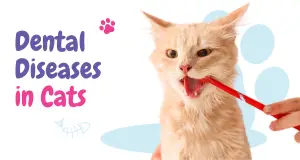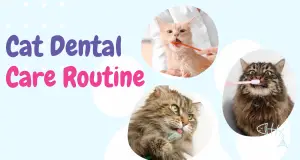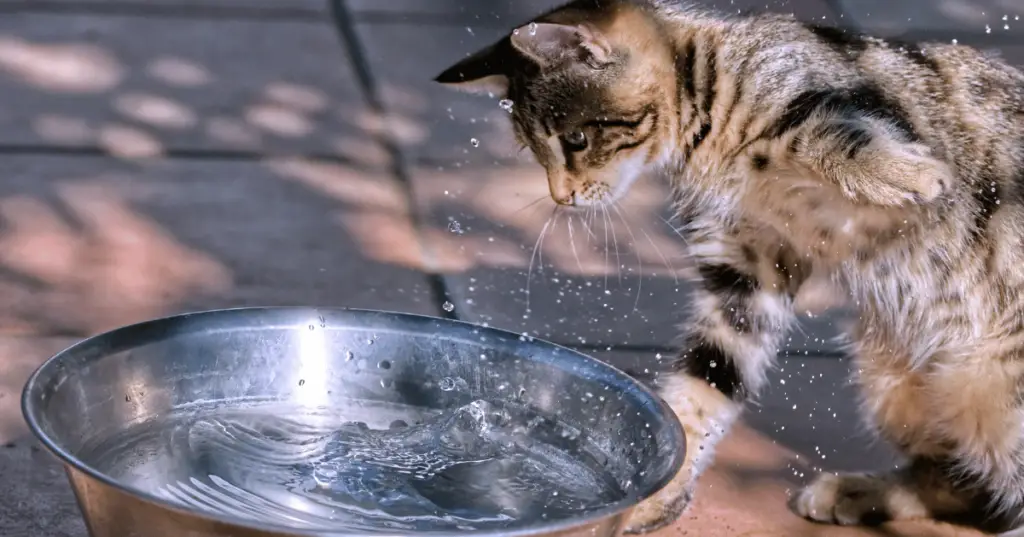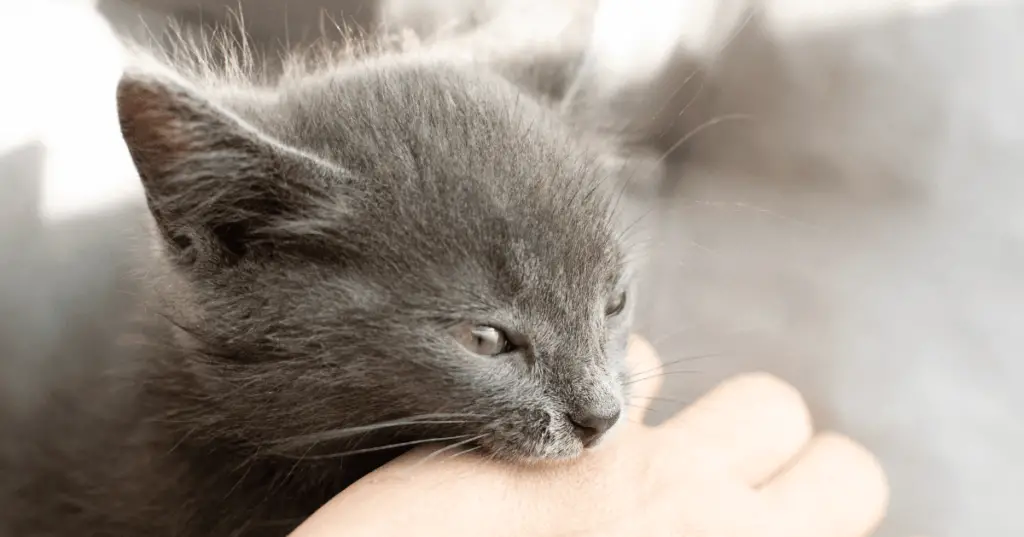Common Dental Diseases in Cats – Its Causes and Prevention Tips

Currently, dental problems in cats are often left untreated and are not considered the most significant health concern.
The studies reveal that more than seventy percent of cats display some form of dental health complications at the age of three only.
Every cat owner and professional vet tech must know the dental disease in cats, how they impact the lives of cats, the symptoms, and how to help the cat avoid the diseases. All these mentioned aspects will be covered in this blog. Let’s get started!
The Importance of Oral Health in Cats
Cats are also prone to various oral health issues, just like humans. The dental disease in cats, if not kept under control, would cause a lot of discomfort, pain and injuries in cats and may result in severe health complications and .
It is, therefore, clear that the teeth health of a cat is not only about the mouth health but also for the entire body of the cat.
Critical Facts About Dental Disease in Cats
Over 70% of cats develop dental disease by age 3.
Types of Dental Disease
The most common types include:
- Periodontal disease
- Tooth resorption
- Gingivitis
Risk Factors
The major contributors are as follows:
- Age
- Diet
- Lack of dental care
Common Types of Dental Disease in Cats
Here is a table summarizing the common types of dental disease in cats.
| Disease | Description | Signs | Prevention/Treatment | ||
| Periodontal Disease | Affects the tissues and fibers around the teeth. Starts as plaque, turns into tartar, causing gum inflammation and infection. | – Red, swollen
gums – Difficulty eating – Bad breath |
– Regular dental
cleanings – Daily tooth brushing |
||
| Gingivitis
|
Early stage of periodontal disease where only the gums are affected, causing redness and swelling. | – Bleeding gums
– Redness and swelling – Reluctance to eat hard food |
– Professional
cleaning – Improved dental hygiene at home |
||
| Tooth Resorption | Condition where a cat’s body breaks down and absorbs the tooth structure, leading to pain and tooth loss. | – Sensitivity when
eating – Red, swollen gums – Drooling |
– Extraction of
affected teeth |
How to Prevent Dental Disease in Cats

Like any disease, it is always easier to prevent than treat, especially dental disease in cats. The following are some common prevention tips.
-
Regular Dental Check-ups
-
Daily Tooth Brushing
-
Dental Treats and Diet
-
Water Additives
Table: Cat Dental Care Routine
| Dental Care Activity | Frequency | Tools Needed |
| Tooth Brushing | Daily | Cat-Specific toothbrush, toothpaste |
| Dental Check-ups | Annually | Veterinary visit |
| Dental Treats | Several times a week | Dental chews or treats |
| Water Additives | Daily | Oral health water additive |
How to Treat Dental Disease in Cats
In particular, it has been mentioned that if your cat really has dental disease, then vets need to be treated as soon as possible in order not to worsen the condition.
Professional Dental Cleaning
The best way is to have your cat’s teeth cleaned by a veterinarian or vet tech, who will also check for other dental issues. In other complicated cases, for instance, when the tooth is resorbing or where the periodontal pockets are deep and inflamed, extraction may be necessary.
Antibiotics and Pain Relief
Your vet may prescribe antibiotics for the infection; in this case, your vet may recommend analgesics for the animal during recovery.
Veterinary Conferences 2024
An excellent option is to attend veterinarians’ conferences to know the current trends in the care of pets.
The Veterinary Conferences 2024 contains several learning formats, from hands-on workshops to dental disease in cats and other important topics.
Wrapping it Up!
Dental disease in cats can be prevented. You can extend your cat’s life span by detecting such indications early and improving your cat’s oral hygiene. Webinars and conferences assist veterinary professionals in keeping abreast with feline care.
And no matter if you are a pet owner or a veterinarian, it is meaningful to do something to help your pet’s mouth stay healthy.
FAQs
What is the end-stage dental disease in cats?
The terminal type of dental disease in cats involves stage four, known as periodontitis. This is a long-term infection that results in the deterioration of gum, teeth, and bones. It is the last phase of dental disease and has terminal effects on tooth health.
How does a cat act with bad teeth?
Cats with dental issues may stop grooming themselves, become more withdrawn, or behave angrily when their faces are rubbed. This might result in a disheveled coat. Excessive drooling, mouth pawing, and face rubbing are all indicators of dental pain.
How do you recover tooth decay in cats?
Frequent cleanings are an excellent method of halting existing deterioration and averting future incidents. Inquire with your veterinarian about any special diets, treats, or other dental items that could help your pet’s oral health.



